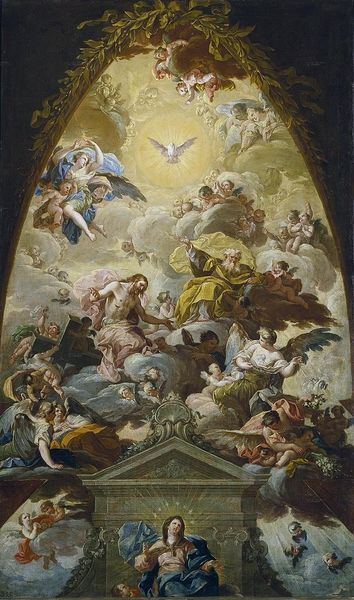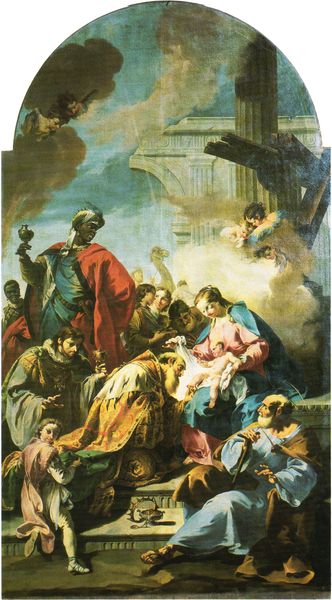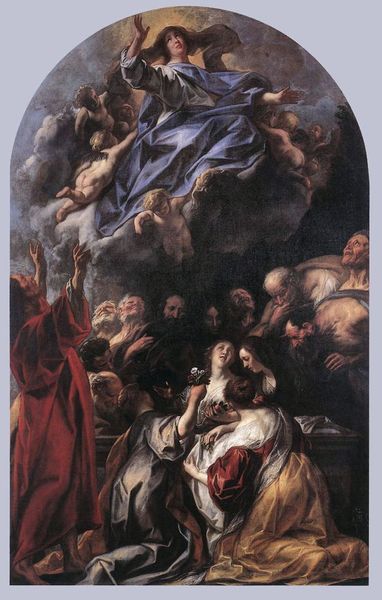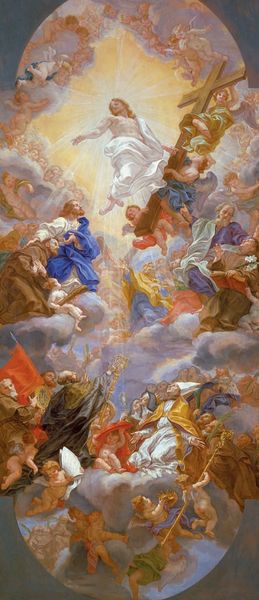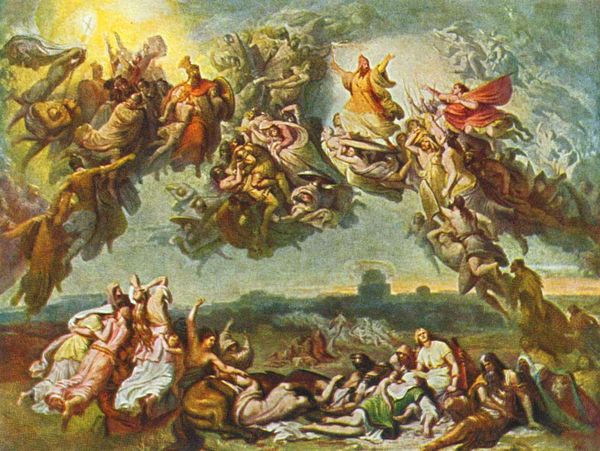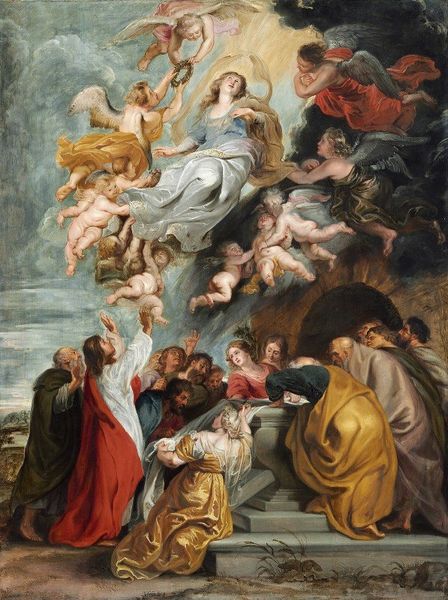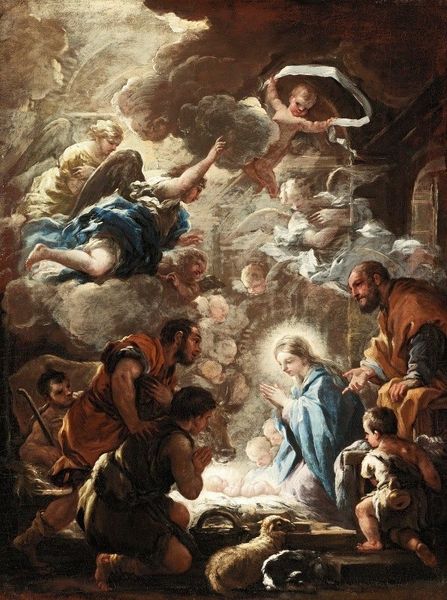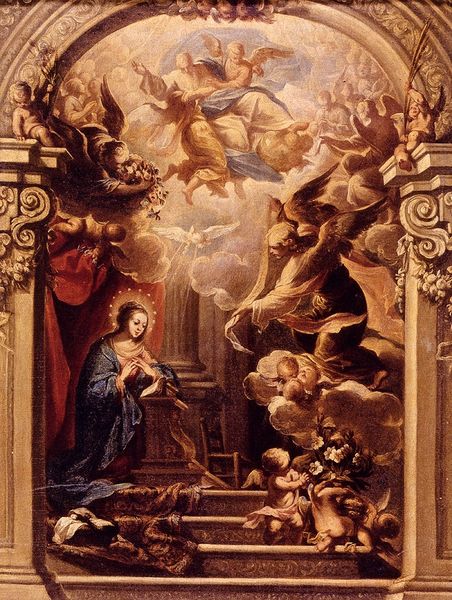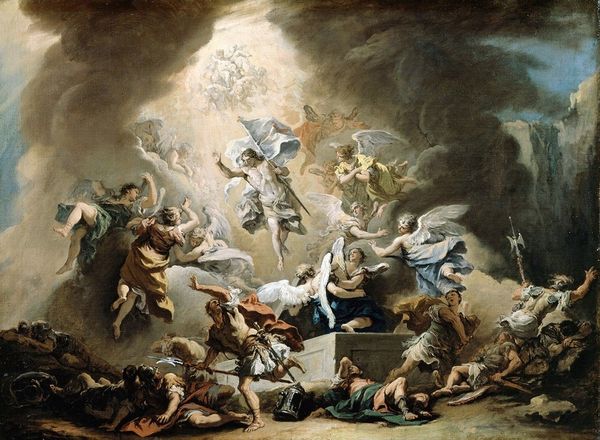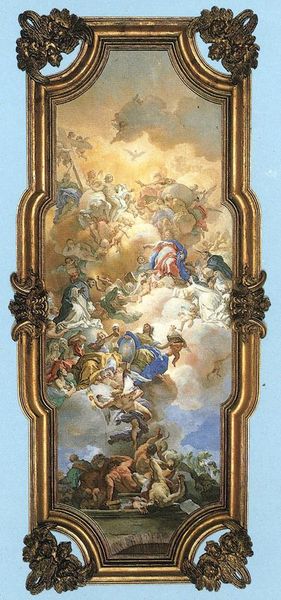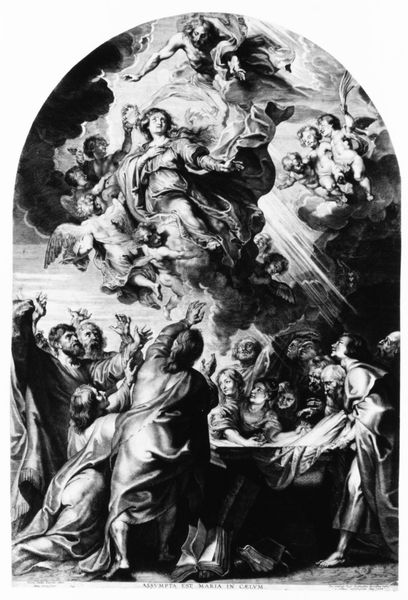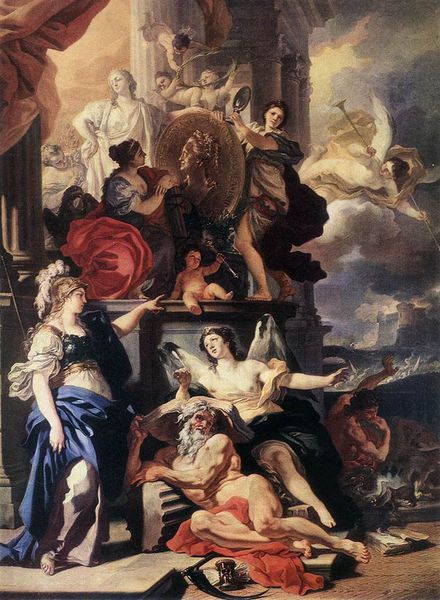
painting, oil-paint
#
allegory
#
baroque
#
painting
#
oil-paint
#
figuration
#
oil painting
#
history-painting
#
rococo
Copyright: Public domain
Curator: Sebastiano Conca’s painting titled "The Glorification of St Cecilia." is quite captivating; tell me, what are your first thoughts? Editor: My goodness, it's a swirl of activity, all bathed in this ethereal, golden light. The eye just keeps moving. Are we seeing oil on canvas here? The paint looks so soft, almost like fabric in places. Curator: Indeed. And consider the composition: It is history painting rendered through a Rococo sensibility, that penchant for drama with figures ascending, rendered in oil. St. Cecilia is crowned as angels guide the eye upward to representations of the holy trinity, while she is surrounded by earthly symbols of music and faith. Editor: Interesting. How do these earthly symbols operate in the narrative construction? Look at the pipe organ, for instance; its inclusion speaks volumes. We know that Cecilia is a patron saint of musicians but this isn't simply a literal representation; it underscores the role of the church in supporting the arts, in harnessing art, specifically music, as a powerful instrument to reach believers. Curator: Absolutely. Beyond the iconographic elements, consider also Conca's handling of the material itself. The almost weightless quality of the clouds and drapery contrasts sharply with the implied weight of the organ. There’s a tangible tension created through his meticulous layering of paint and glazes. It pushes the boundary between surface and depth, real and unreal, doesn't it? Editor: It certainly does! Looking at the socio-political implications embedded in what may initially read as straightforward devotional imagery, I'm also wondering about its reception, the historical audience, how it was received, the place where it was shown. This wasn't simply an act of personal faith; it was part of the grand spectacle of Baroque and Rococo culture and the artist worked to deliver what his public craved and expected of the grand style. Curator: Yes. These elements give "The Glorification of St Cecilia" added richness beyond the surface-level reading. The painting not only provides an exercise in devotional understanding but invites examination into its social contexts, and production materials. Editor: Quite so. Thinking about patronage, power dynamics, even the artist's own standing, gives an added perspective of this work, rather than only seeing it as a vision of saintly glory. Curator: And the way those historical elements intersect with and inform the artwork's form... Editor: Precisely, thank you for shedding light on a way to further appreciate its cultural significance.
Comments
No comments
Be the first to comment and join the conversation on the ultimate creative platform.
